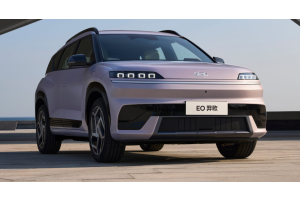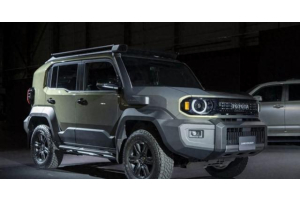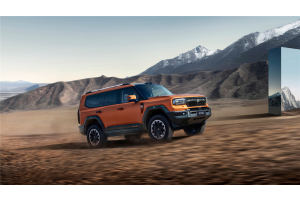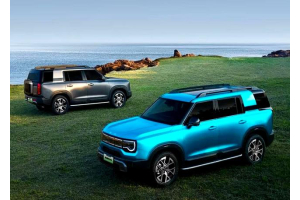页面 2 - Automotive Import
-
四月 11, 2025
Chinese Vehicle Exports to Europe: Key Markets, Tariffs & Import Procedures
Europe's Top Import Hubs for Chinese Vehicles
Belgium: Europe's Primary Gateway
Belgium maintains its position as the leading entry point for Chinese vehicles entering Europe. Between January and August 2024, Belgium imported over 180,000 Chinese vehicles, ranking fifth globally among China's auto export destinations. The strategic ports of Antwerp and Zeebrugge handle this massive volume, though recent EU tariff implementations have slightly moderated growth.
Netherlands: The Transit Powerhouse
The Netherlands witnessed a dramatic surge in Chinese vehicle imports, with values jumping from €0.1 billion in 2022 to €1.1 billion in 2023. Notably, about two-thirds of Chinese EVs entering the Netherlands are destined for other European markets. When excluding transit trade, China ranks as the fourth largest vehicle supplier to the Dutch market.
EU Import Trends: China's Growing Dominance
- 781,980 Chinese vehicles imported
-
四月 02, 2025
China's Used Car Export Market Analysis: Africa Focus China's Used Car Export Market Analysis: Africa Focus
1. Overview of China's Used Car Export Market
The Chinese used car export market has experienced significant growth since its official launch in May 2019. By March 2024, the market was fully liberalized, with initial export operations starting in key regions including Beijing, Tianjin, Shanghai, Zhejiang (Taizhou), Shandong (Jining), and Guangdong.
From April 2019 to 2023, China exported a total of 367,000 used vehicles worth $8.74 billion. In 2023 alone, exports reached 274,500 units valued at $6.88 billion (approximately ¥43.9 million RMB at current exchange rates).
The market shows balanced exports between new energy vehicles (NEVs) and traditional fuel vehicles, with 138,000 NEVs and 136,000 fuel vehicles shipped. Notably, NEVs accounted for 60.6% of total export value due to their higher average prices.
Chinese used cars now reach over 160 countries and regions, with Belt and
-
四月 02, 2025
Complete Guide: Exporting New Energy Vehicles from China to Dubai
1. Preparatory Phase
Market Research
Before exporting NEVs to Dubai, thorough market research is essential. This includes understanding local demand, consumer preferences, import policies, and regulatory standards. Vehicles must comply with GCC certification requirements, and exporters should verify registration feasibility with Dubai's RTA or other UAE transportation authorities if specifications don't match Middle Eastern standards.
Certifications and Licenses
Exporting NEVs requires specific qualifications. While authorized manufacturers can directly export branded EVs, other enterprises need proper licensing. According to regulations, new vehicle exporters must submit trade contracts, third-party evaluation reports, and vehicle registration certificates to commerce departments for export licenses.
Logistics Partner Selection
Choosing an experienced logistics provider like TopUsedCars.com is crucial for successful NEV
-
四月 02, 2025
Complete Guide: Exporting Used Cars from China to Saudi Arabia
Key Certification Requirements for Saudi Market Entry
SABER Certification - Mandatory for All Imports
The Saudi Arabian government requires SABER certification for all imported used vehicles. This system consists of two critical components:
Product Certificate (PC): Valid for one year, this certificate confirms your vehicle meets Saudi technical regulations. Importers must register in the SABER system and select an approved conformity assessment body. TopUsedCars.com can assist with the entire application process, including preparing necessary test reports on vehicle performance and safety standards.
Shipment Certificate (SC): Required for each individual shipment, this is the final clearance document. Our team prepares the SC certification using your commercial invoice and packing list directly in the SABER system after shipment departure.
GCC Certification - Regional Standard Compliance
All vehicles must comply with Gulf Cooperation
-
四月 02, 2025
China Car Export Guide to Saudi Arabia: Everything You Need to Know
Who Can Import Vehicles from China?
In Saudi Arabia, the following individuals are eligible to directly import vehicles:
- Saudi nationals
- GCC citizens residing in Saudi Arabia
- Holders of Saudi Iqama residence permits
The first two categories can import up to 2 vehicles per year, while Iqama holders can only import 1 vehicle every 3 years. With car prices in Saudi Arabia being higher than other Gulf countries, many residents prefer direct imports - creating excellent business opportunities for Chinese car exporters, especially used car dealers.
Eligible Vehicles for Export to Saudi Arabia
Vehicles must meet these requirements:
- Non-Israeli origin
- Left-hand drive (no converted RHD vehicles)
- Undamaged body with no accident history
- Never used as police/emergency vehicles or taxis
- Maximum 5 years old (10 years for used heavy trucks)
- Compliant with GCC quality standards
- Meeting Saudi fuel efficiency requirements
Key Regulations
-
四月 02, 2025
Zhongtong Bus Expands Global Footprint with Record Chile Order and Strong Overseas Performance
Major Export Orders
On March 26, 2025, Zhongtong Bus celebrated the shipment of the first batch of 895 pure electric buses to Chile, marking the largest single export order of Chinese buses to Chile in recent years.
This shipment represents Zhongtong's third "super order" in three years. Previous major contracts include:
- 1,000 buses to Kyrgyzstan (May 20, 2023)
- 1,022 buses to Saudi Arabia (February 21, 2024)
Global Market Presence
As one of China's earliest bus manufacturers and a pioneer in new energy vehicle R&D, Zhongtong has established strong presence across multiple markets:
- Portugal: Largest NEV bus supplier
- Egypt: Pure electric buses operating at the Pyramids
- Singapore: Double-decker electric buses for public transport
- Operations across Central Asia, Middle East, Africa, Americas, and Europe
Recent Market Performance
- Saudi Arabia became Zhongtong's first overseas market to exceed 10,000
-
四月 02, 2025
Western Land-Sea Corridor Pioneers Innovative JSQ-RORO Intermodal Transport
Breakthrough Shipment Details
The first railway JSQ special train of the Western Land-Sea New Corridor arrived at Qinzhou Railway Container Center Station in Guangxi on the morning of March 25. This landmark shipment carried 200 Chinese-made vehicles destined for Jebel Ali Port in Dubai, UAE via Roll-on/Roll-off (RORO) vessel.
Revolutionary Transport Model
This marks the corridor's inaugural use of an innovative intermodal solution combining JSQ rail cars with RORO shipping. The breakthrough method establishes a safer, more efficient, and cost-effective transportation alternative for Chinese automakers exporting to Middle Eastern and Southeast Asian markets.
JSQ Car Advantages
JSQ cars represent specialized rail transport equipment featuring:
- Two-level interior configuration with through-passage design when end doors open
- Vehicles can drive directly into the carriage
- Enhanced protective structures compared to standard
-
四月 02, 2025
African Automotive Market Guide for Chinese Exporters
Market Overview
The African automotive market is experiencing steady growth, presenting significant opportunities for Chinese exporters. According to industry analysts, the continent's vehicle market is projected to reach 1.41 million units by 2024, expanding to 1.89 million units by 2029 with a compound annual growth rate of 6.04%.
Major global players including Volkswagen, Toyota, Renault, Hyundai, and Mercedes-Benz currently dominate the market. However, Chinese brands are making strategic inroads through local assembly partnerships and competitive pricing.
NEV Revolution in Africa
African nations are actively promoting new energy vehicles (NEVs). South Africa aims for 20% of new car sales to be electric by 2025, while Kenya has launched an "e-mobility" program to expand charging infrastructure. This shift creates prime opportunities for Chinese EV manufacturers.
Country-Specific Import Regulations & Market Conditions
Ethiopia
-
四月 01, 2025
Exporting Electric Vehicles to Saudi Arabia: A Comprehensive Guide Exporting Electric Vehicles to Saudi Arabia: A Comprehensive Guide
Exporting electric vehicles (EVs) to Saudi Arabia involves a meticulous process to ensure compliance with local regulations and facilitate smooth customs clearance. Here is a step-by-step guide to help you navigate this process.
Step 1: Ensure Compliance with SASO Regulations
- Understand SASO Requirements: Familiarize yourself with the standards set by the Saudi Arabian Standards Organization (SASO), including safety, environmental, and quality management system requirements such as ISO/TS 16949 certification. This ensures your EVs meet the necessary technical and safety standards[5]. - Obtain SASO Certificate of Conformity: Apply for a Type Approval Certificate through SASO's JEEM platform by submitting the required technical file and documents, including the electric vehicle test report, material safety data sheet (MSDS) for the battery, and other necessary
-
三月 31, 2025
Saudi Arabia's Automotive Market in February 2025: A Mixed Bag for Chinese Brands Saudi Arabia's Automotive Market in February 2025: A Mixed Bag for Chinese Brands
Sales Overview and Brand Performance
In February 2025, the Saudi Arabian new light vehicle market saw a significant surge, with sales reaching 72,388 units, a 14% year-over-year increase. This growth continues the market's recovery trend observed since 2024. The cumulative sales for the first two months of 2025 totaled 140,311 units, representing a 10.9% increase compared to the same period last year[2][4%.
Key Drivers of Growth
The growth in sales can be attributed to several factors, including stable oil prices (projected to remain above $80 per barrel in 2025), increased government spending, and enhanced consumer confidence.
Market Dominance and Brand Performance
- Toyota: Led the market with a 26.2% market share, maintaining its strong position.
- Hyundai and Nissan: Followed closely, with Hyundai's Accent model showing a 36.9%





